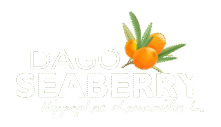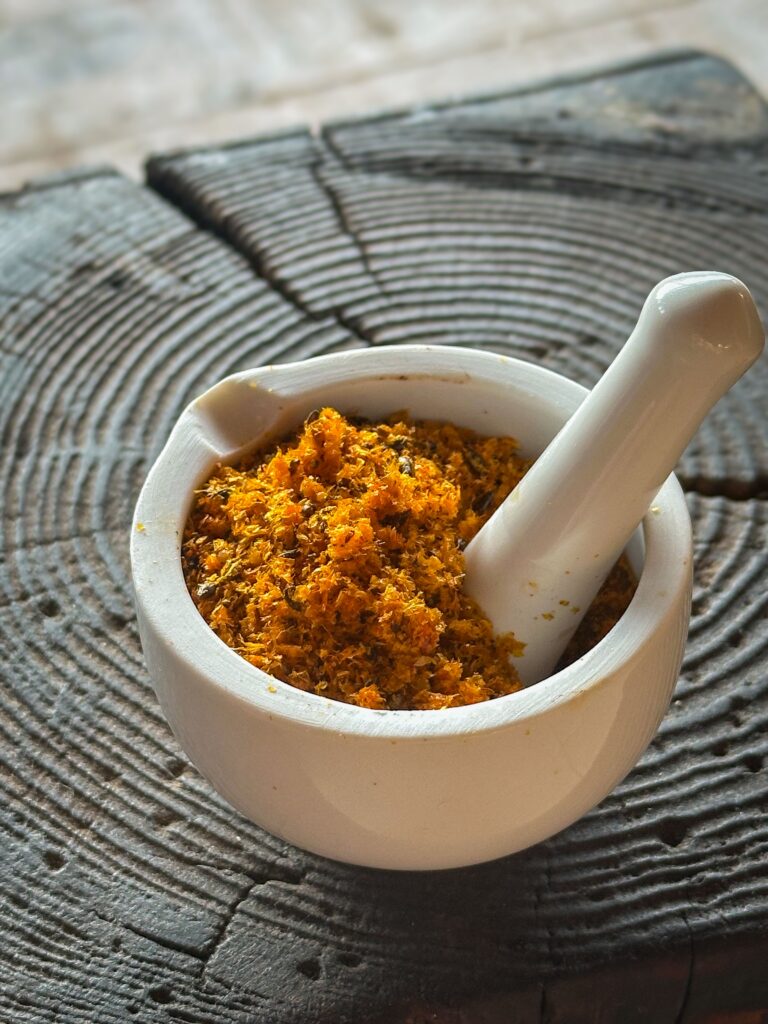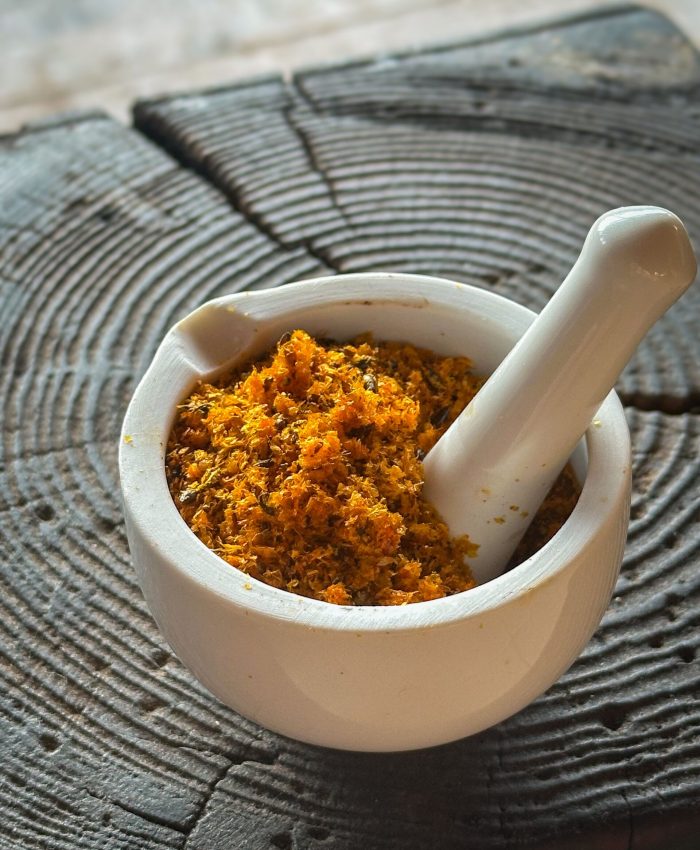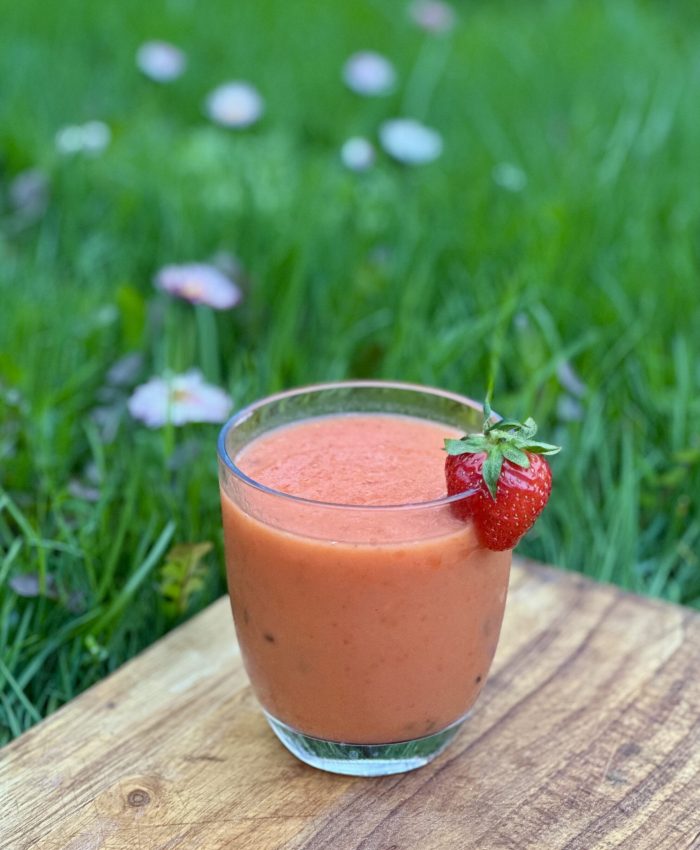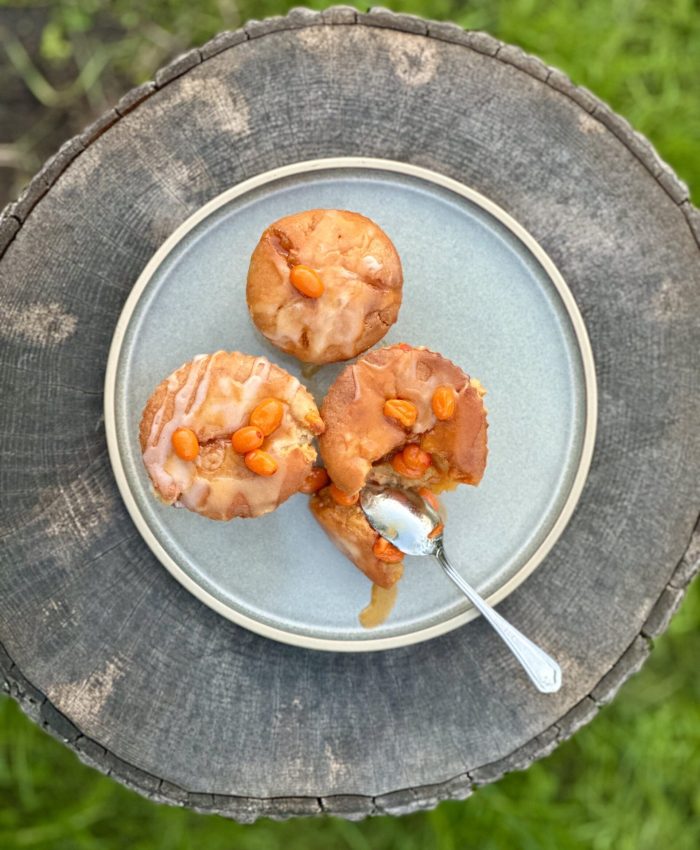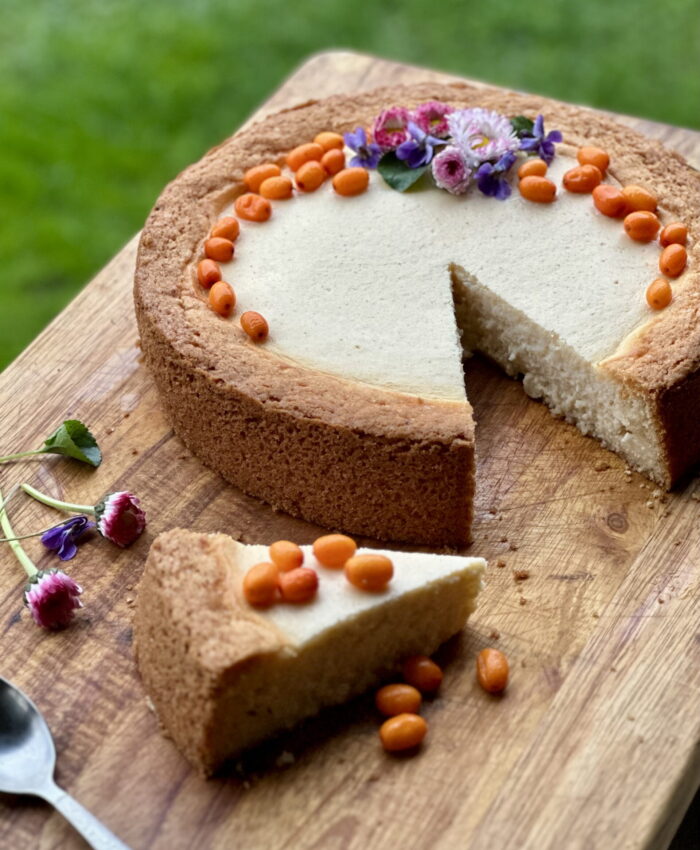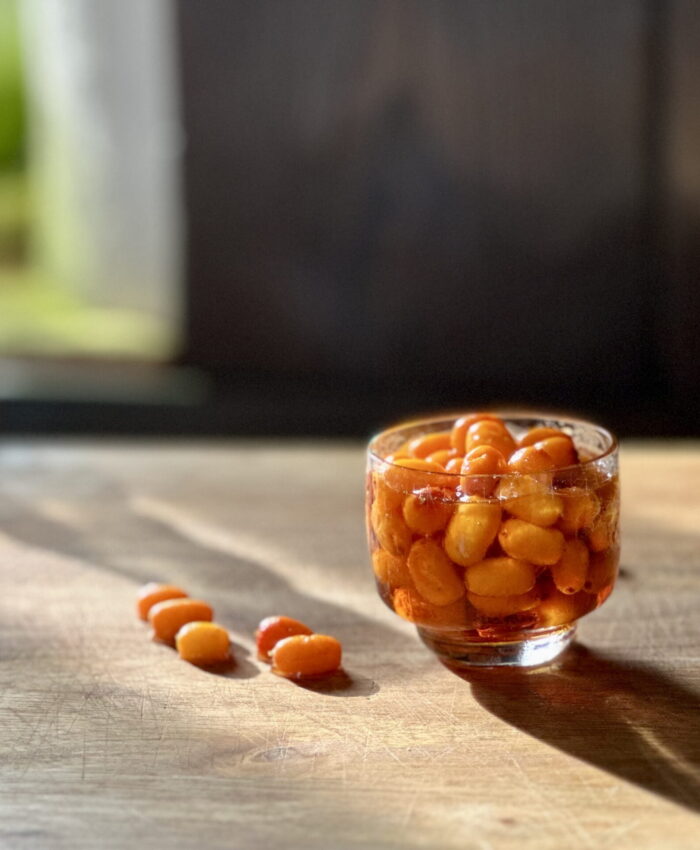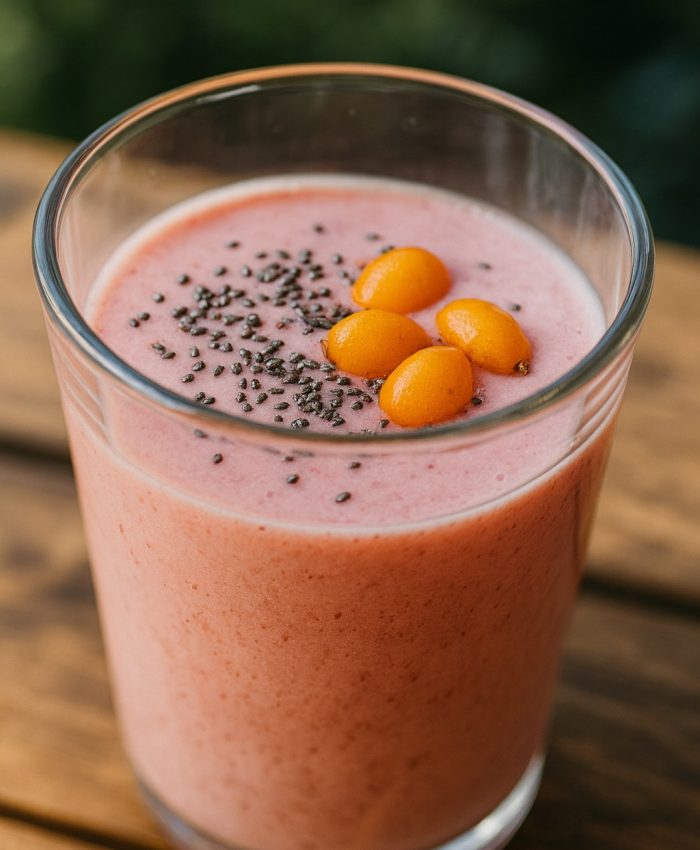What You’ll Need
- Leftover mass from sea buckthorn juice (seeds and skins that remain on the sieve)
- Baking paper and a food dehydrator (or oven set to low temperature)
- Coffee grinder or spice mill
Preparation
1. After juicing, press the remaining skins and seeds in the sieve to squeeze out all the liquid. Spread the drained mixture thinly on baking paper and place it on the trays of your food dehydrator.
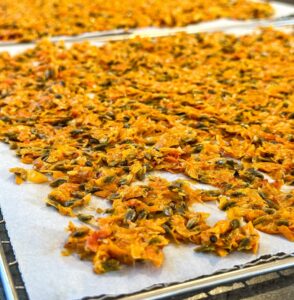
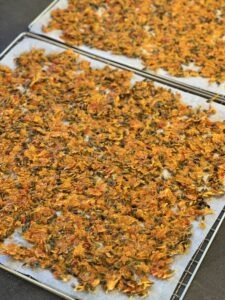
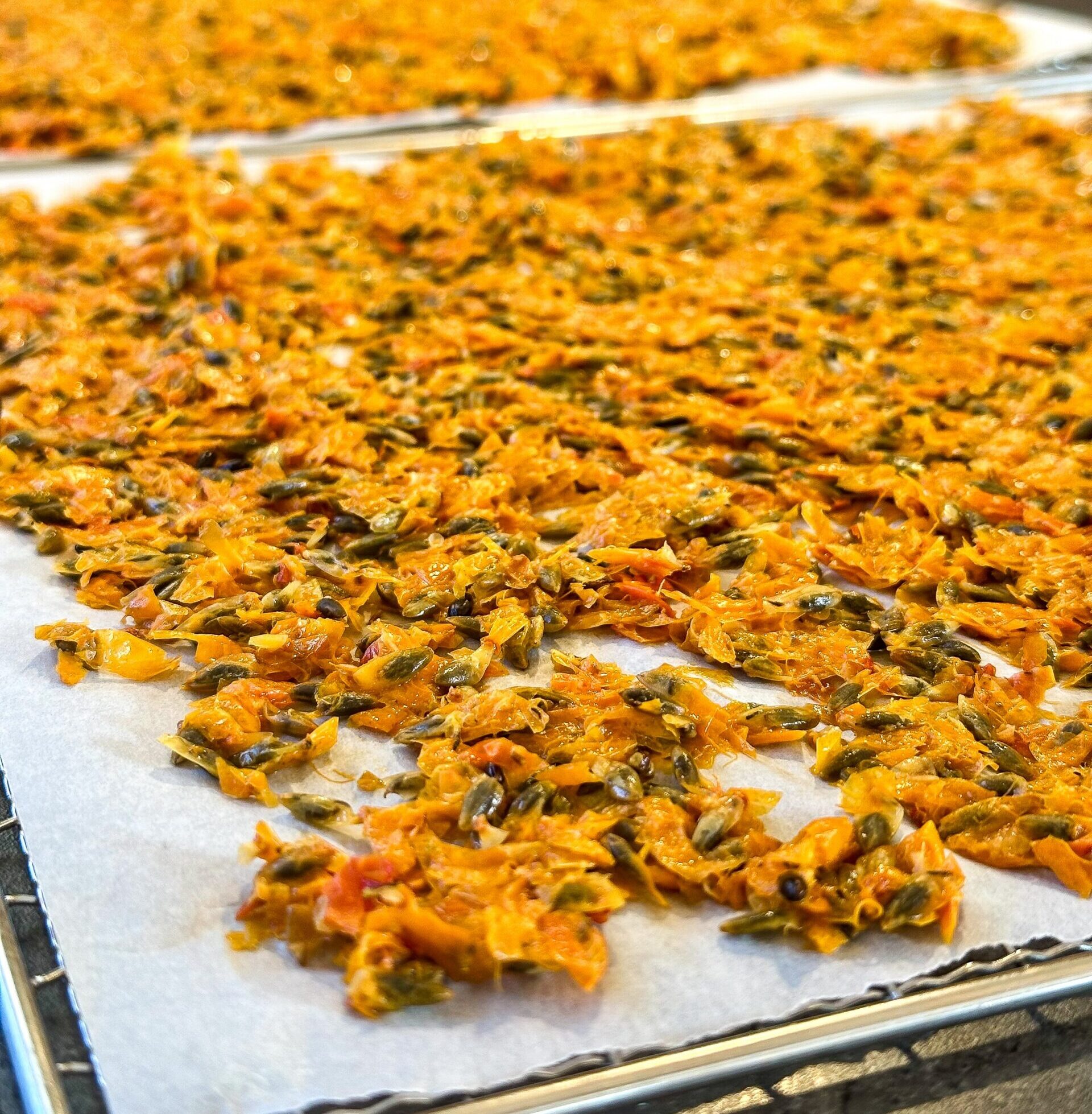
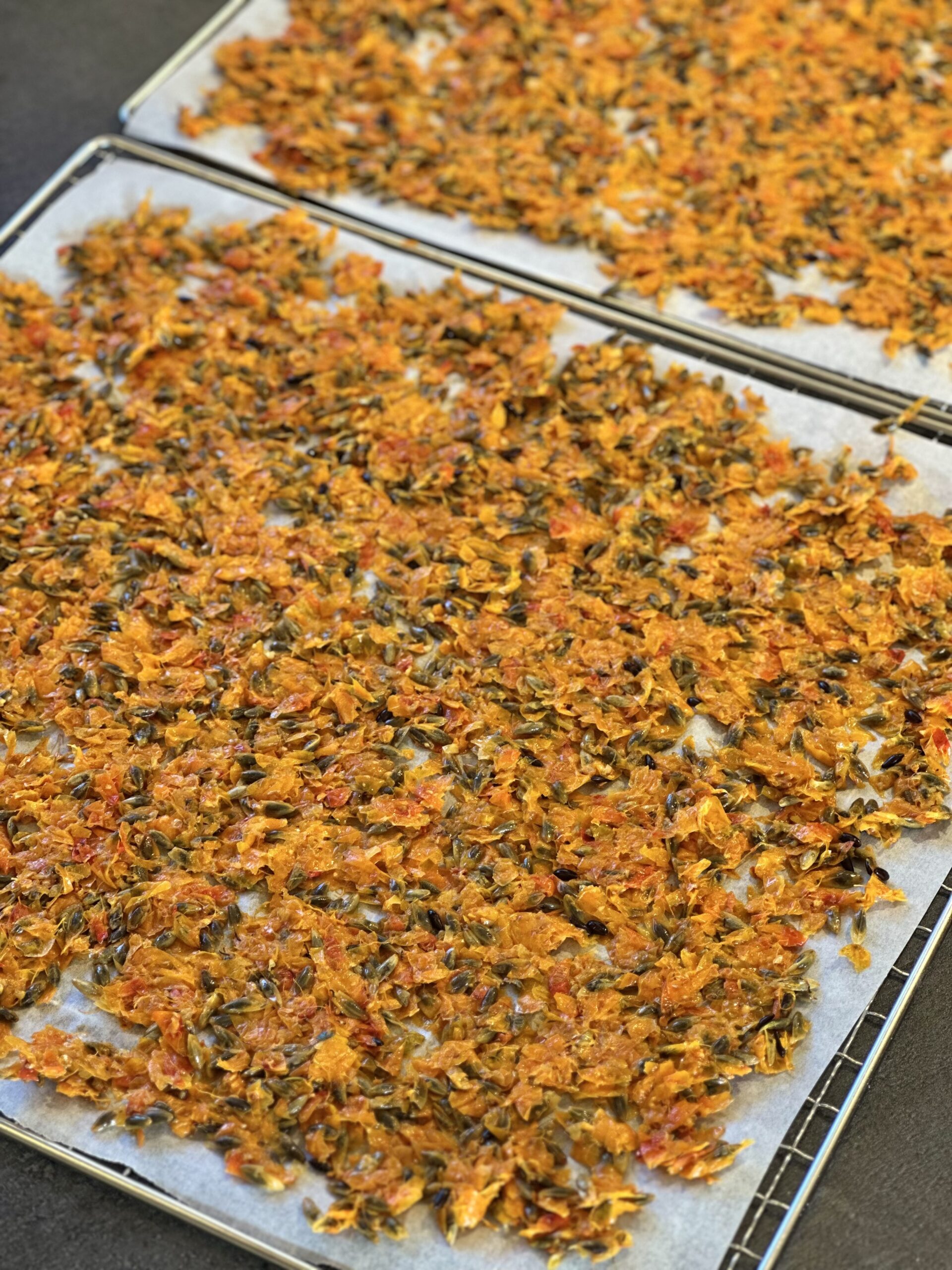
2. Dry at around 45 °C (113 °F) until fully crisp, usually 6 to 8 hours depending on the thickness of the layer. This gentle temperature helps preserve delicate antioxidants and fatty acids that would otherwise be damaged by heat.
3. Once completely dry, grind the mixture in a coffee or spice grinder until it reaches the desired texture. A rougher grind works especially well in baked goods and smoothies.
4. Keep the sea buckthorn meal in an airtight container, stored in a cool, dry, and dark place.
How to Use Sea Buckthorn Meal
- Add a teaspoon to yogurt or smoothies.
- Mix into porridge, granola, or doughs to enrich flavor and fiber content.
- Use as a natural color and flavor enhancer in pancakes, energy bars, or desserts.
- Experiment with skincare recipes: blended with honey or yogurt, it can make a simple, vitamin-rich face mask.
For the curious
Sea buckthorn doesn’t love heat. Vitamin C, polyphenols, and many carotenoids break down quickly when temperatures climb too high, which is why drying is usually kept around 40–50 °C. At these gentler levels, the color stays vivid, the aroma holds, and the flavor remains bright rather than bitter.
The plant’s story stretches back to antiquity. Theophrastus and later Dioscorides described a thorny shrub called hippophae, fed to horses to improve their strength and the shine of their coat. The identification isn’t absolute, but the etymology “shining horse” and the descriptions align well with the sea buckthorn lineage we know today.
Long before sustainability had a name, the plant thrived from Europe to Mongolia and Siberia. It rooted itself in dry riverbeds, coastal dunes, and poor, stony soils, fixing nitrogen and holding ground in places where few others survived. For travellers and herders, the berries and seed oil were a small but steady source of nourishment through long winters.
Modern research mirrors these old observations. The berry’s fatty acids, including omega-7 in the pulp and omega-3 in the seeds, help keep cell membranes functional under cold and drought stress. The skin carries carotenoids and polyphenols that buffer sunlight and oxidation. Even after juicing, much of this remains in the press cake, which is why dried, ground sea buckthorn retains its deep color and aroma.
